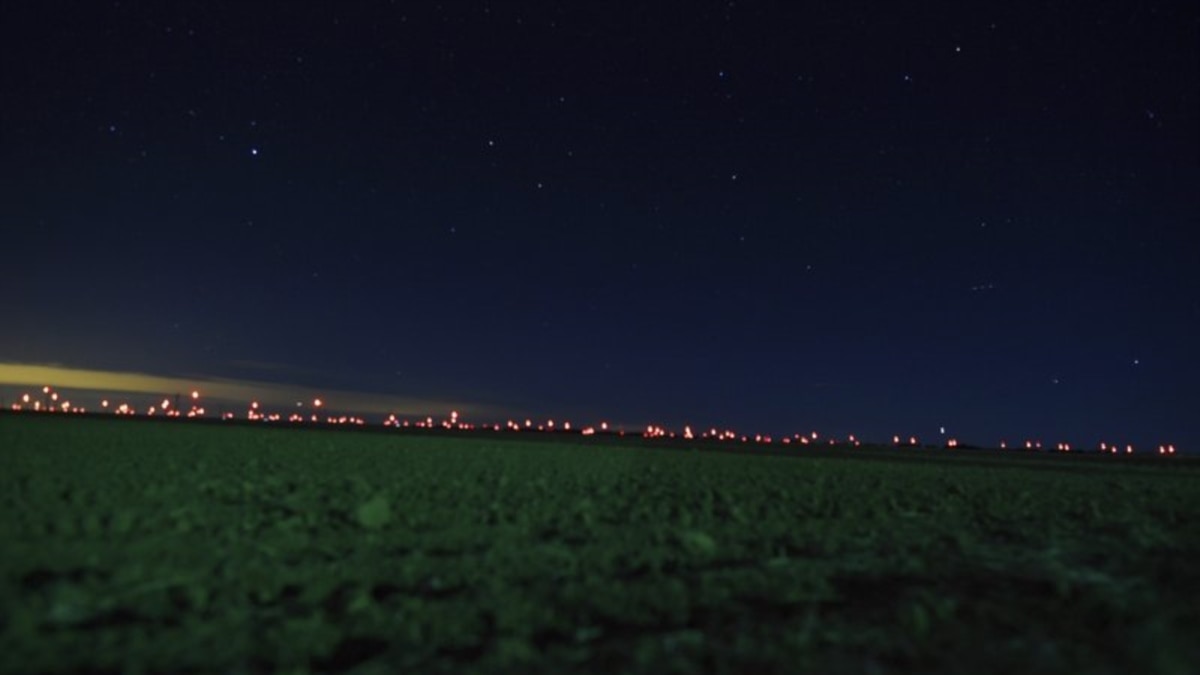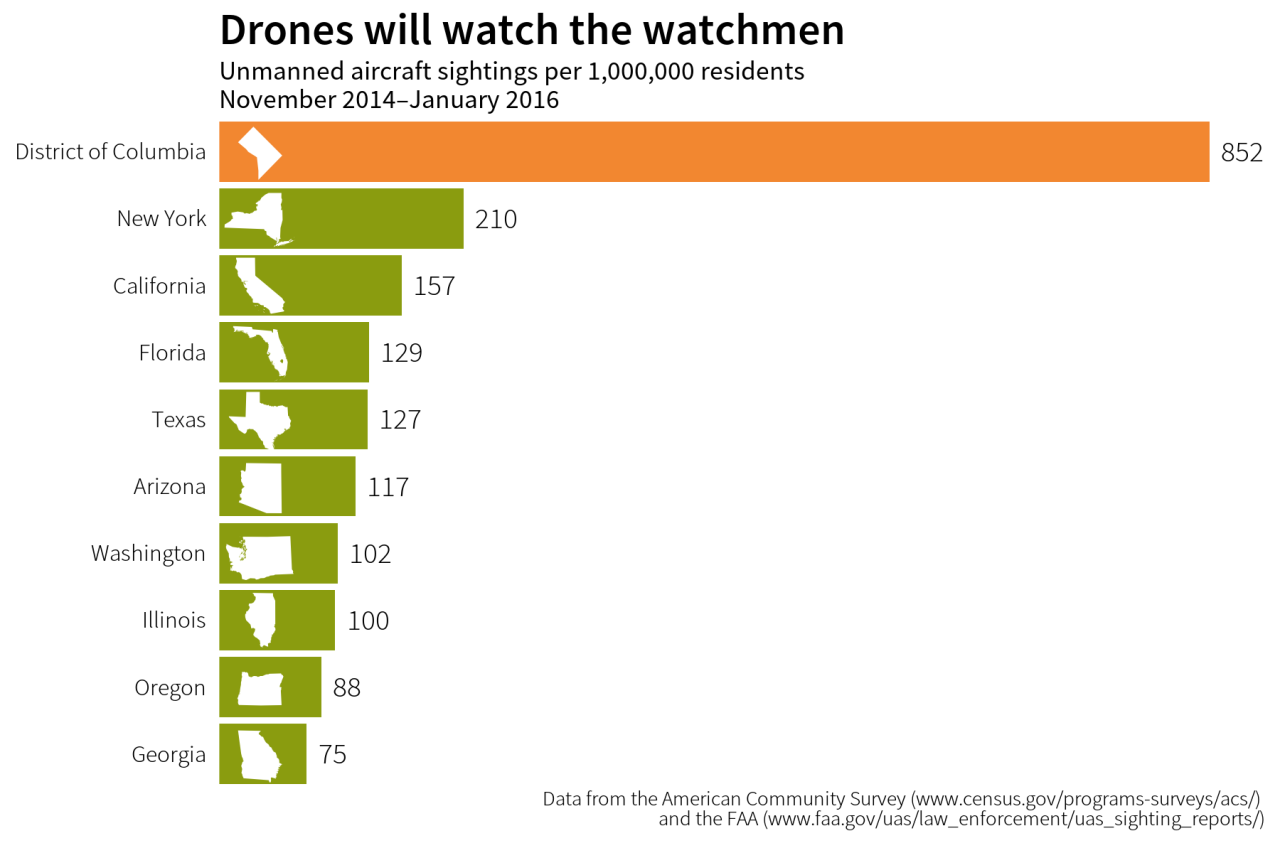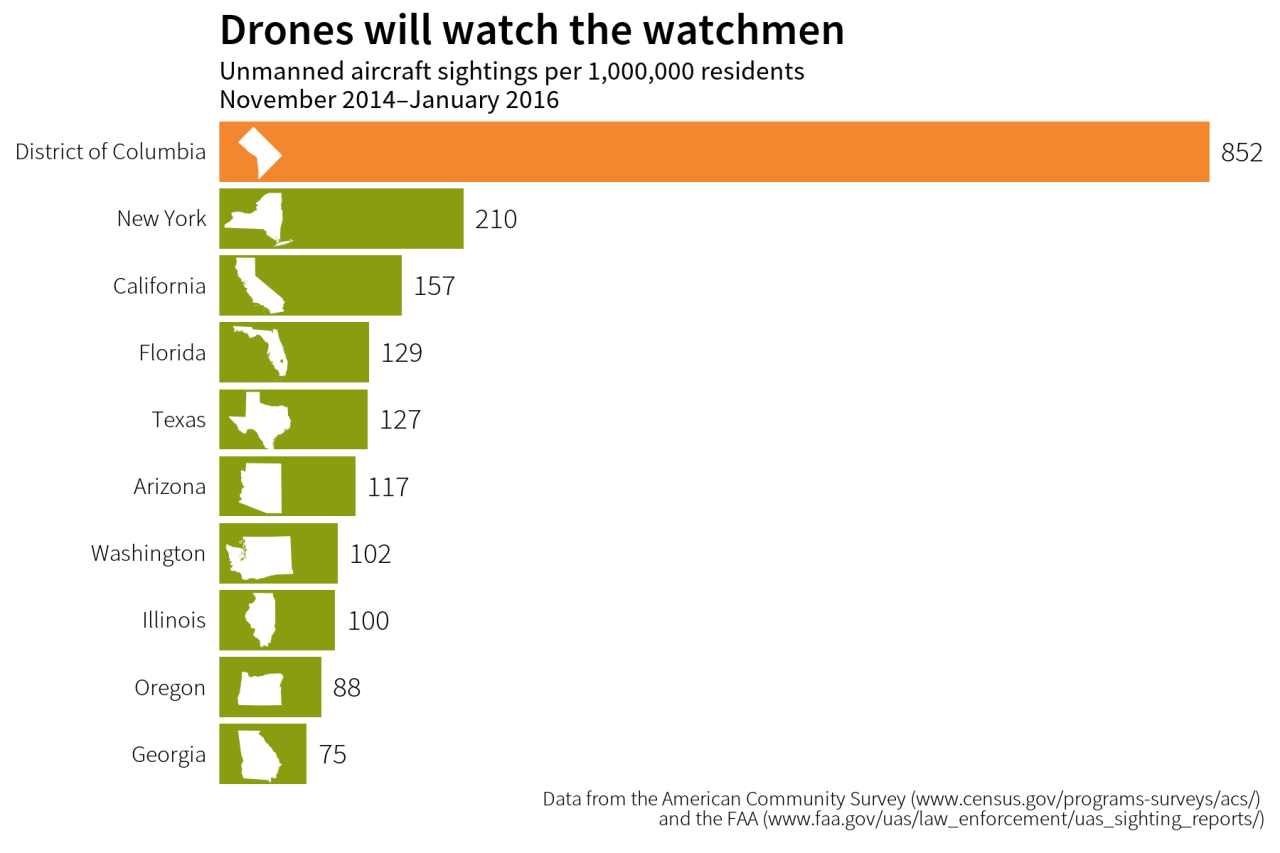Drone Sightings USA represent a growing concern impacting various sectors. This analysis examines the frequency, geographic distribution, and impact of drone sightings across the United States, considering both authorized and unauthorized drone operations. We explore the regulatory landscape, public perception, and technological advancements shaping the response to this phenomenon, providing a data-driven overview of the challenges and implications.
The study utilizes diverse data sources, including publicly available reports, news articles, and government data, to present a comprehensive picture. Data visualization techniques, such as cartographic mapping and tabular representations, are employed to illustrate key trends and patterns in drone sightings across different states and regions. The analysis considers the impact on aviation safety, national security, and critical infrastructure, offering insights into effective mitigation strategies and future technological advancements.
Impact of Drone Sightings on Different Sectors

The proliferation of unmanned aerial vehicles (UAVs), commonly known as drones, has led to a significant increase in drone sightings across the United States. These sightings, while often benign, pose considerable challenges and risks to various sectors, demanding careful consideration of their potential impact on safety, security, and infrastructure. This section details the consequences of drone sightings across key sectors.
Aviation Industry Impacts
Drone sightings near airports and other airspace pose significant safety risks to manned aircraft. Collisions with drones, even small ones, can cause substantial damage to aircraft, potentially leading to catastrophic accidents. The kinetic energy of a drone impacting an aircraft at high speed can compromise the structural integrity of the aircraft, especially impacting critical components such as engines or windshields.
Furthermore, drone sightings necessitate temporary airspace closures or diversions, leading to flight delays, cancellations, and significant economic disruption for airlines and passengers. The Federal Aviation Administration (FAA) has reported numerous incidents involving near-misses between drones and aircraft, highlighting the urgent need for effective drone detection and mitigation strategies. These disruptions underscore the need for robust regulations and technological solutions to prevent drone incursions into controlled airspace.
Law Enforcement and National Security Challenges
Drone sightings present substantial challenges to law enforcement and national security. Drones can be used for illicit activities, such as smuggling contraband, conducting surveillance on critical infrastructure, or even carrying out attacks. The ability of drones to operate stealthily and covertly makes them difficult to detect and track, posing a significant threat to national security. The use of drones to disrupt law enforcement operations, such as interfering with police investigations or providing reconnaissance for criminal activities, further complicates the situation.
Investigations into drone-related incidents often require significant resources and specialized expertise, adding to the burden on law enforcement agencies. The potential for malicious use of drones necessitates the development of effective counter-drone technologies and robust security protocols to protect critical infrastructure and maintain public safety.
Infrastructure Impacts, Drone sightings usa
Drone sightings near critical infrastructure, such as power grids, nuclear power plants, and water treatment facilities, can have severe consequences. A drone collision with a power line, for example, could cause a power outage affecting thousands of people, potentially leading to significant economic losses and disruptions to essential services. Similarly, a drone strike on a critical facility could result in damage to equipment, environmental contamination, or even loss of life.
The potential for drones to be used to conduct reconnaissance or even deliver explosives to such facilities necessitates stringent security measures and proactive risk mitigation strategies. Incidents involving drones near infrastructure highlight the vulnerability of critical systems to unauthorized aerial access and the need for robust security protocols to protect these vital assets.
Array
Public perception of drones in the USA is complex and multifaceted, shaped by a range of factors including media portrayals, personal experiences, and evolving technological advancements. While drones offer significant benefits across various sectors, concerns regarding privacy, security, and potential misuse contribute to a mixed public opinion. Understanding this nuanced perspective is crucial for responsible drone regulation and public safety.Public perception of drones is influenced by both positive and negative narratives.
Positive views often center on the technological advancements and practical applications of drones, such as in photography, infrastructure inspection, and search and rescue operations. Negative perceptions, however, frequently stem from anxieties surrounding privacy violations, potential weaponization, and the disruption of established social norms. These contrasting viewpoints create a dynamic landscape of public opinion regarding drone technology and its societal impact.
Media Portrayal of Drone Sightings
Media coverage of drone sightings significantly shapes public perception. News reports frequently emphasize the novelty or potential threat of a sighting, often focusing on the unknown nature of the drone’s purpose or operator. For example, reports of drone sightings near airports or sensitive government facilities tend to be framed as potential security risks, generating public concern and highlighting the need for robust security protocols.
Conversely, news stories about drones used for beneficial purposes, such as delivering medical supplies or monitoring wildlife, often present a more positive image, showcasing the potential societal benefits of drone technology. The tone and framing of these reports significantly impact how the public understands and reacts to drone-related events. Sensationalized reporting can exacerbate anxieties, while balanced and informative coverage can promote a more nuanced understanding.
Hypothetical Public Awareness Campaign
A hypothetical public awareness campaign aimed at educating the public about responsible drone use and reporting suspicious activity could leverage multiple channels to reach a broad audience. The campaign would focus on disseminating accurate information regarding drone regulations, responsible flight practices, and procedures for reporting potentially hazardous or suspicious drone activity. This would involve collaborations with federal, state, and local agencies to create a unified and credible message.The campaign could include public service announcements (PSAs) broadcast on television and radio, highlighting the importance of responsible drone operation and the potential consequences of misuse.
Furthermore, interactive online resources, such as websites and social media campaigns, could provide detailed information about drone regulations, safety guidelines, and reporting procedures. Educational materials could be developed for schools and community organizations to promote awareness among younger generations. Finally, community outreach programs could engage directly with the public, providing opportunities for questions and answers, fostering dialogue, and addressing public concerns.
The campaign’s overall goal would be to empower the public with the knowledge and resources to safely navigate the increasing prevalence of drones in everyday life, while simultaneously fostering vigilance in reporting potentially harmful activity.
Drone sightings in the USA present a complex issue demanding a multi-faceted approach. While technological advancements offer improved detection and countermeasures, effective regulation, public education, and collaboration between various stakeholders remain crucial. Addressing the safety, security, and societal implications of drones requires a continuous assessment of emerging trends and the proactive development of comprehensive strategies. Future research should focus on refining data collection methods, improving predictive modeling, and exploring the long-term societal impacts of widespread drone integration.
Question Bank: Drone Sightings Usa
What are the penalties for illegal drone operation in the USA?
Penalties vary by state and violation but can include hefty fines, jail time, and the confiscation of the drone.
How can I report a suspicious drone sighting?
Contact local law enforcement or the relevant federal agency, such as the FAA, depending on the circumstances.
What types of technology are used to detect drones?
Drone detection technologies include radar, radio frequency sensors, acoustic sensors, and optical systems, often integrated into a wider surveillance network.
Are there specific no-fly zones for drones in the USA?
Yes, numerous no-fly zones exist near airports, government facilities, and other sensitive locations. These are defined by federal regulations and local ordinances.
Increased drone sightings in the USA have raised concerns regarding airspace safety and security. Understanding regulatory frameworks is crucial; obtaining a drone license, such as through resources like drone licence canada , provides a baseline for responsible operation. This contrasts with the unregulated nature of some observed US drone activity, highlighting the need for consistent international standards to manage drone usage effectively.
Increased drone sightings in the USA necessitate advanced surveillance technologies. One example of such technology is the sophisticated camera system utilized for infrastructure monitoring, such as the massey tunnel camera , which offers high-resolution imagery for object detection and tracking. This level of visual data analysis could be adapted to enhance drone detection and identification efforts across the nation, improving security protocols.
